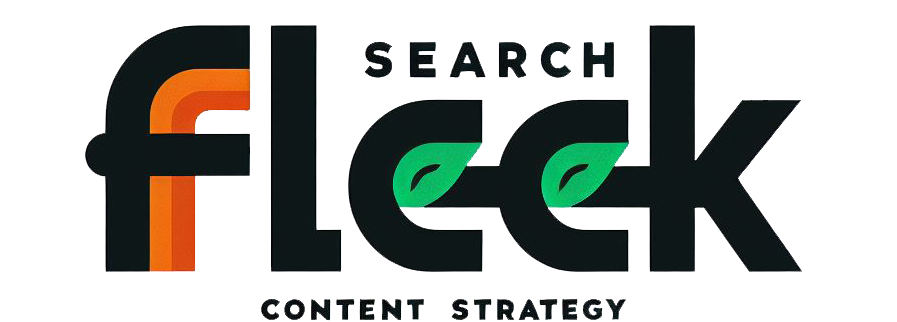In today’s rapidly evolving professional landscape, the need for continuous learning and development has never been greater. Individuals and businesses alike are constantly seeking ways to upskill and stay ahead of the curve. This is where professional training academies come in, offering a wealth of knowledge and practical skills to empower learners and propel careers forward.
But in a crowded marketplace filled with training providers, how do you effectively stand out from the competition? Your website, of course, serves as your digital storefront, showcasing the courses you offer. However, a well-maintained blog can be your secret weapon.
A compelling blog not only attracts potential clients, but also establishes you as a thought leader within your industry, fosters a community of engaged learners, and ultimately leads to increased enrollment in your training programs.
This guide delves into the key strategies for crafting a professional training academy blog that resonates with your target audience and delivers exceptional value. By implementing these tips and infusing your unique brand voice, you can transform your blog into a powerful tool for driving growth and success.
Know Your Audience and Their Needs
The foundation of any successful blog lies in understanding your target audience. Who are you trying to reach? Are you focusing on individuals seeking career advancement within specific industries, businesses looking to upskill their workforce across various departments, or perhaps a combination of both?
Once you’ve identified your ideal audience, take the time to delve deeper into their specific challenges and aspirations. What are their pain points? What skills are they looking to develop? What career paths are they hoping to pursue?
Industry Specificity:
Professional training needs differ across various industries. For instance, individuals seeking advancement in IT might be interested in courses on cybersecurity or cloud computing. Conversely, those in marketing might focus on social media strategy or content marketing techniques.
Consider your academy’s areas of expertise and tailor your blog content accordingly. If you offer training programs in finance, discuss emerging trends in the financial sector, career paths for aspiring financial professionals, and essential skills they need to succeed.
By understanding your audience’s specific needs and tailoring your content to address them directly, you establish yourself as a trusted resource and demonstrate a genuine interest in their success.
Expertise is Your Currency: Establish Yourself as a Thought Leader

There’s no better way to attract potential clients and establish your academy’s credibility than by positioning yourselves as thought leaders in your field. A well-curated blog allows you to showcase the knowledge and experience of your instructors and staff.
Publish insightful articles:
Explore topics related to your training programs, analyzing industry trends, providing expert opinions, and offering valuable insights. This establishes you as a trusted voice within your industry and demonstrates the depth of knowledge offered through your training programs.
Go beyond course promotion:
While it’s important to showcase your training programs, resist the urge to simply promote them in every blog post. Instead, focus on offering valuable takeaways for your readers. Share practical tips, real-world case studies, and actionable strategies that empower individuals to address professional challenges even before they enroll in your courses.
By demonstrating your expertise through thought-provoking content, you build trust with your audience and position yourself as a valuable resource on their learning journey.
Content Variety is King: Engage Your Audience with Different Formats
People learn in different ways, so keeping your content format diverse is crucial to engaging your audience. Here are some popular formats to consider:
- In-depth articles: Explore complex topics in detail, providing comprehensive information and analysis. These articles are ideal for readers seeking in-depth knowledge on a specific subject.
- Shorter, engaging pieces: Not everyone has time for lengthy articles. Cater to busy professionals with shorter, bite-sized content like infographics, listicles, and “quick tips” pieces.
- Case studies: Showcase the positive impact your training programs have had on past clients. Share real-world examples of how your courses helped individuals or businesses achieve their goals.
- Video and podcasts: Embrace multimedia content by creating engaging videos and podcasts featuring your instructors or industry experts. This format caters to visual and auditory learners and allows for a more dynamic learning experience.
Learning from Others: Research established professional training academies and their blogging strategies. Analyze what kind of content resonates most with their audience and how they tailor it to their industry.
By offering a variety of content formats that cater to different learning styles and preferences, you ensure there’s something valuable for everyone who visits your blog.
The Power of Storytelling: Capture Attention with Compelling Narratives
People connect with stories. Leverage this power by incorporating storytelling elements into your blog posts.
Success stories:
Highlight the positive outcomes your training programs have had on past clients. Share compelling narratives of individuals or businesses who achieved significant career advancements or overcame specific challenges after participating in your training programs. These stories demonstrate the practical value of your programs and inspire potential clients to embark on their own learning journeys.
Case Study Example:
Imagine a recent blog post on “Boosting Your Leadership Skills in the Digital Age.” You could feature a case study of a mid-level manager named Sarah who participated in MENA Executive Training’s Leadership Development Program. The story could outline Sarah’s initial challenges in leading a remote team, her experience with the program’s strategies on communication and motivation, and how she successfully implemented them to create a more engaged and productive team. Highlighting such success stories not only showcases the effectiveness of your training but also creates a sense of connection with your readers.
Instructor Spotlight:
Feature interviews with your instructors, offering a glimpse into their expertise and passion for their fields. This allows readers to connect with the instructors on a personal level and gain confidence in the quality of instruction they’ll receive through your programs.
By weaving storytelling elements into your blog content, you create a more engaging experience for your readers, make your content more memorable, and ultimately drive them toward enrolling in your training programs.
Leverage Search Engine Optimization (SEO) for Maximum Visibility
In today’s digital world, ensuring your blog posts rank high in search engine results is crucial for attracting organic traffic. Here are some basic SEO practices to consider:
- Keyword research: Identify relevant keywords people use to search for topics related to your training programs. Strategically integrate these keywords throughout your content, but avoid keyword stuffing.
- Meta descriptions and titles: Craft compelling meta descriptions and titles that accurately reflect your blog posts and entice readers to click. These snippets appear on search engine results pages, so make them informative and engaging.
SEO Example:
If you’re writing a blog post on “The Importance of Data Analysis Skills in the Modern Workplace,” your meta description could summarize the benefits of these skills in various industries and highlight your training program that addresses this need.
By implementing basic SEO techniques, you increase the visibility of your blog and ensure potential clients seeking the skills you offer can easily find your valuable content.
Promotion and Engagement: Amplify Your Content’s Reach
Creating valuable content is just one part of the equation. To maximize the impact of your blog, you need to actively promote it and encourage audience engagement.
- Social media marketing: Share your blog posts on relevant social media platforms like LinkedIn and Twitter. Utilize engaging visuals and compelling headlines to grab viewers’ attention and encourage them to click through to your blog.
- Email marketing: Include blog updates in your email newsletters to inform your existing subscriber base about new content.
- Guest blogging: Consider contributing guest posts to industry publications or websites frequented by your target audience. This allows you to reach a wider audience and establish yourself as an expert within your field.
Call to Action:
Encourage reader engagement by incorporating calls to action (CTAs) within your blog posts. You can invite readers to download complimentary resources, subscribe to receive notifications on new content, or contact MENA Executive Training for a free consultation to explore personalized training solutions.
By actively promoting your blog and prompting reader interaction, you build a loyal audience, foster a sense of community, and ultimately drive conversions from visitors to enrolled trainees.
Sample Blog Post Outline: Structuring Content for Impact
Here’s a sample blog post outline demonstrating how to structure content that resonates with your target audience:
- Attention-grabbing title: Craft a title that piques your readers’ interest and accurately reflects the content’s value proposition.
- Introduction: Briefly introduce the topic, highlight a common pain point your audience faces, and tease the solution your post will offer.
- Body: Delve into the topic in detail, addressing the pain point and providing actionable advice, tips, or strategies. Here’s where you can showcase your expertise and weave in relevant examples or case studies.
- Call to action: Encourage readers to take the next step, whether it’s downloading a resource, enrolling in a training program, or contacting you for further information.
- Conclusion: Briefly summarize the key takeaways and reiterate the value your training program offers in addressing the topic discussed.
By following a well-structured format like this, you can ensure your blog posts are informative, engaging, and guide readers towards a desired action.
Example Blog Post Outline:
- Title: “Unlocking Your Career Potential: Essential Skills for the Future Workforce”
- Introduction: Open with a thought-provoking statistic about the pace of change in today’s job market. Briefly discuss the importance of continuous learning and highlight how skills gaps can hinder career advancement.
- Body: Delve into the specific skills in high demand across various industries, such as critical thinking, problem-solving, digital literacy, and effective communication. Provide practical tips and strategies for developing these skills, incorporating relevant industry trends and real-world examples.
- Call to Action: Encourage readers to download a free whitepaper outlining a comprehensive approach to professional development. Mention how MENA Executive Training offers a range of courses specifically designed to help individuals cultivate these critical skills and thrive in the future workplace.
Metrics and Measurement: Tracking Your Blog’s Success

Once you’ve implemented these strategies for creating a compelling professional training academy blog, it’s crucial to track your success and measure its impact. Analyze key metrics such as website traffic, blog post engagement (likes, comments, shares), and lead generation (conversions from visitors to inquiries or enrollments).
By monitoring these metrics, you gain valuable insights into your audience’s preferences and what content resonates most with them. This allows you to refine your approach and continuously improve your blog’s effectiveness in attracting new clients and driving growth for your training academy.
Conclusion: Building a Thriving Blog for Your Training Academy
In today’s competitive landscape, a well-maintained professional training academy blog isn’t just an afterthought; it’s a strategic asset. By implementing the tips outlined in this guide, you can transform your blog into a powerful tool for attracting new clients, establishing your academy as a thought leader, and fostering a community of engaged learners. Remember, consistency is key. Regularly publish high-quality content, actively promote your blog, and analyze your results. By doing so, you can leverage the power of your blog to propel your training academy towards lasting success.
Emon Anam, CEO of Search Fleek, isn't your typical digital guru. He brings a unique blend of financial expertise (former banking pro!) and digital marketing mastery to the table. A self-proclaimed "SEO Sherlock Holmes," Emon unlocks content secrets for local businesses and SaaS companies. But beyond the keyboard, he's a devoted family man, music enthusiast, and cricket champion. Let Emon weave your digital success story!
AI Writing Disclaimer
This post was initially researched and outlined by me. The content was then generated by an AI language model using the provided information. The final text has been reviewed and edited by me for accuracy and clarity.




